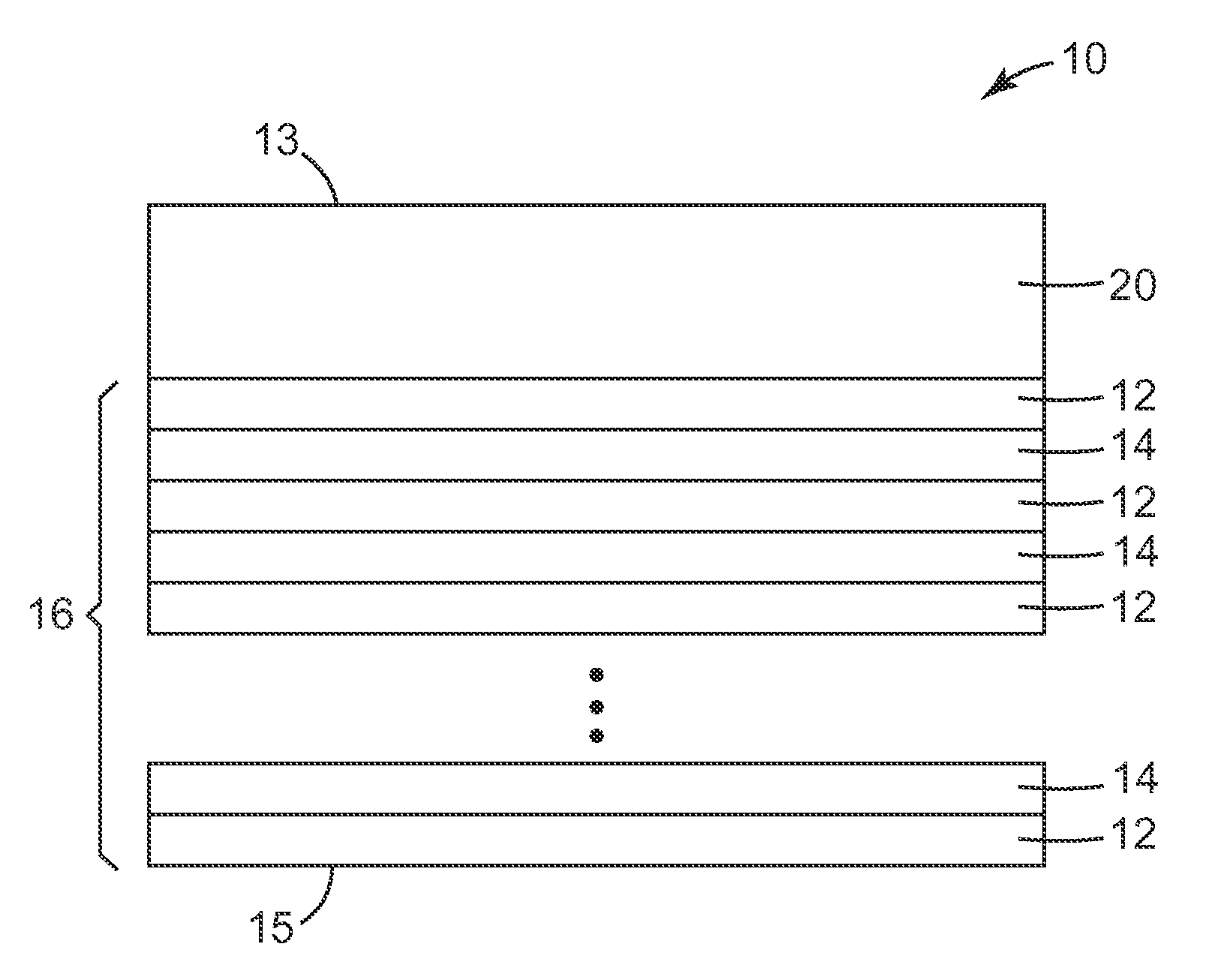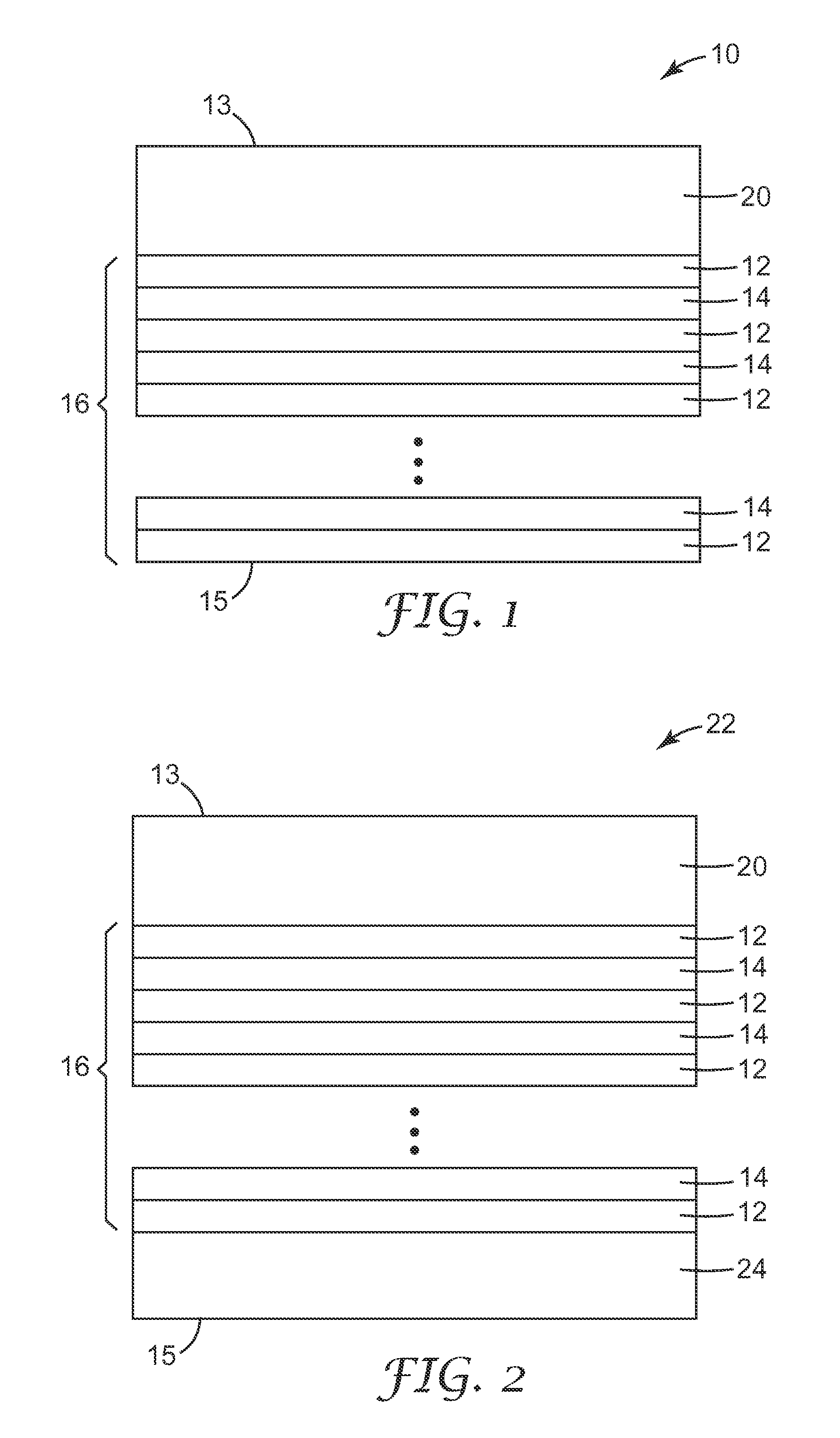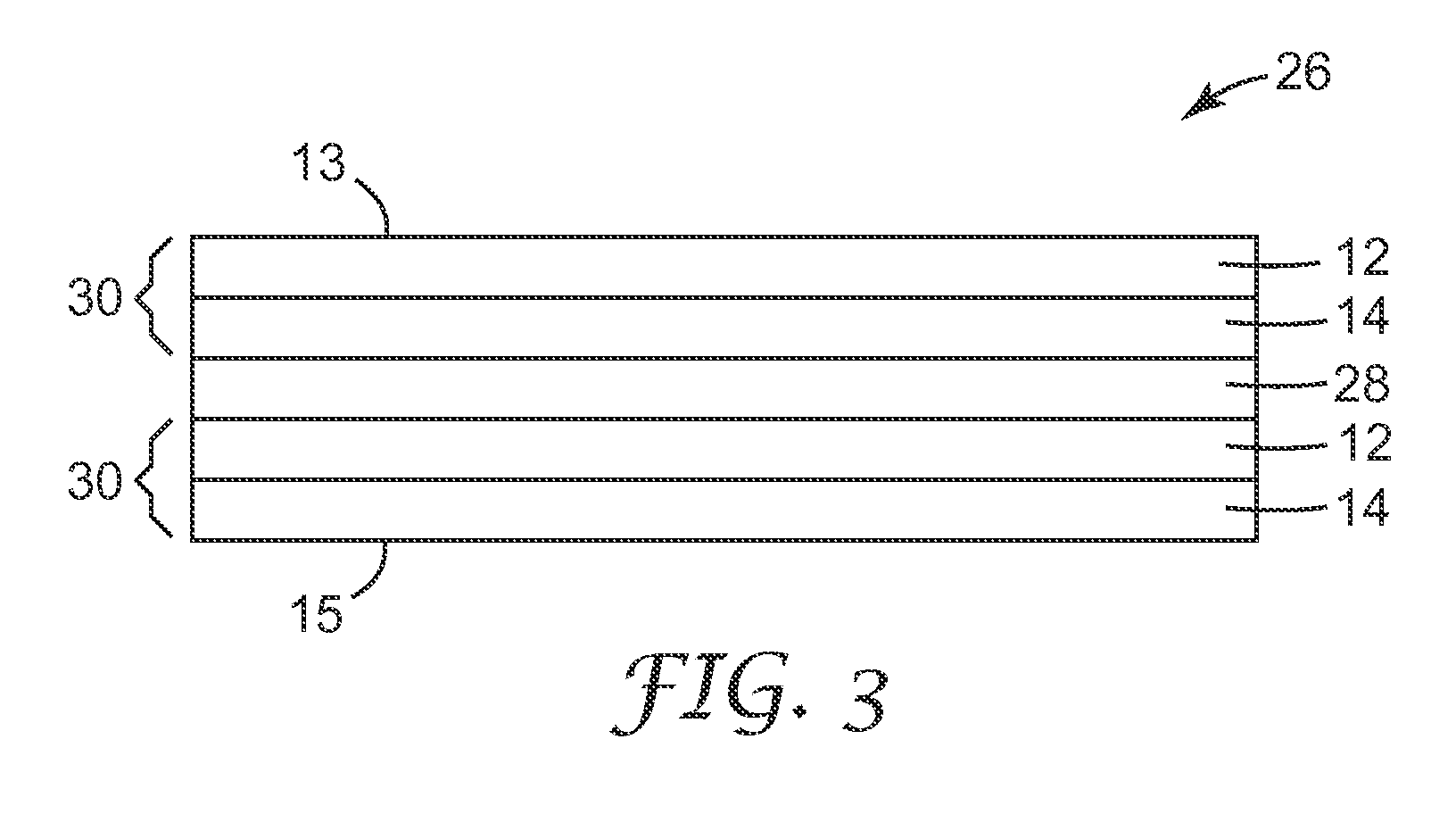Films including thermoplastic silicone block copolymers
a technology of thermoplastic silicone and copolymer, which is applied in the direction of synthetic resin layered products, instruments, other domestic objects, etc., can solve the problems of film unusability and surface damag
- Summary
- Abstract
- Description
- Claims
- Application Information
AI Technical Summary
Problems solved by technology
Method used
Image
Examples
example 1
[0068] A polydiorganosiloxane polyoxamide block copolymer, silicone polyamide polymer, was prepared as follows: 10.00 grams of 5 k silicone diamine (a polydimethylsiloxane diamine with MW=5200; 1.0 eq; 0.0019 mole diamine that was prepared as described in U.S. Pat. No. 5,214,119, incorporated by reference) was degassed in a round bottomed flask with a heat gun and aspirator. 44.8 grams of tetrahydrofuran (THF) was then added. Next, 0.9773 grams of trifluoroethyl oxalate (MW=254.09; 2.0 eq; 0.0038 mole) was dripped into the mixture under ambient conditions. 0.2235 g of distilled hexamethylene diamine (MW=116.21; 1.0 eq; 0.0019 mole) was diluted in 1 ml of THF; this mixture was added to the flask at a rather fast steady drip with a pipette. The mixture was stirred under ambient conditions for several minutes. The reaction was then sampled and verified that the reaction had progressed to a high level of polymerization. A sample was cast out and upon drying produced a clear, strong elas...
example 2
[0076] Diethyl oxalate (241.10 grams) was placed in a 3 liter, 3-neck resin flask equipped with a mechanical stirrer, heating mantle, nitrogen inlet tube (with stopcock), and an outlet tube. The flask was purged with nitrogen for 15 minutes and 5 k PDMS diamine (a polydimethylsiloxane diamine with an average molecular weight of about 5,000 g / mole that was prepared as described in U.S. Pat. No. 5,214,119, incorporated by reference) (2,028.40 grams, MW=4,918) was added slowly with stirring. After 8 hours at room temperature, the reaction flask was fitted with a distillation adaptor and receiver, the contents stirred and heated to 150° C. under vacuum (1 Torr) for 4 hours, until no further distillate was able to be collected. The remaining liquid was cooled to room temperature to provide 2,573 grams of oxamido ester terminated product. Gas chromatographic analysis of the clear, mobile liquid showed that no detectable level of diethyl oxalate remained. Molecular weight was determined by...
example 3
[0079] Into a 20° C. 2 gallon stainless steel reaction vessel, 3675.4 grams of 5 k ethyl oxalylamidopropyl terminated polydimethyl siloxane (titrated MW=6174), which was prepared in a fashion similar to the description in the previous example, was placed. The vessel was subjected to agitation (80 rpm), and purged with nitrogen flow and vacuum for 15 minutes. The kettle was then nitrogen pressurized to 5 psig and heated to 90° C. over the course of 25 minutes. 81.08 grams of meta-Xylylene Diamine (available from TCI America) was then added to the kettle, followed by 80 grams of toluene. The kettle was then heated to a temperature of 105° C. After 65 minutes at 105° C., pressure on the kettle was slowly vented over the course of 5 minutes. The kettle was then subjected to vacuum (˜20 mmHg) for one hour to remove the ethanol and toluene. The kettle was then repressured to 2 psig and the viscous molten polymer was then drained into a Teflon coated tray and allowed to cool. The cooled si...
PUM
| Property | Measurement | Unit |
|---|---|---|
| temperatures | aaaaa | aaaaa |
| refractive index | aaaaa | aaaaa |
| temperature | aaaaa | aaaaa |
Abstract
Description
Claims
Application Information
 Login to View More
Login to View More - R&D
- Intellectual Property
- Life Sciences
- Materials
- Tech Scout
- Unparalleled Data Quality
- Higher Quality Content
- 60% Fewer Hallucinations
Browse by: Latest US Patents, China's latest patents, Technical Efficacy Thesaurus, Application Domain, Technology Topic, Popular Technical Reports.
© 2025 PatSnap. All rights reserved.Legal|Privacy policy|Modern Slavery Act Transparency Statement|Sitemap|About US| Contact US: help@patsnap.com



